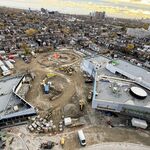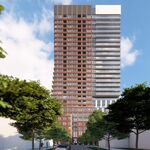dowlingm
Senior Member
Whether stock is stored under cover or not is down to the commissioning agency. If they say “build a covered barn or at least a gas station type roof, we have the $”, the construction designer will open the relevant template and slap it on the drawing. However, the supports for that will require the right footings, may increase minimum spacing between some tracks, would change drainage management for heavy rain or snow melt. Only upside would be being able to slap a bunch of solar panels or a green roof above, neither of which can be classed as transit essential. More useful than some of the public art which is slapped into budgets these days though.




